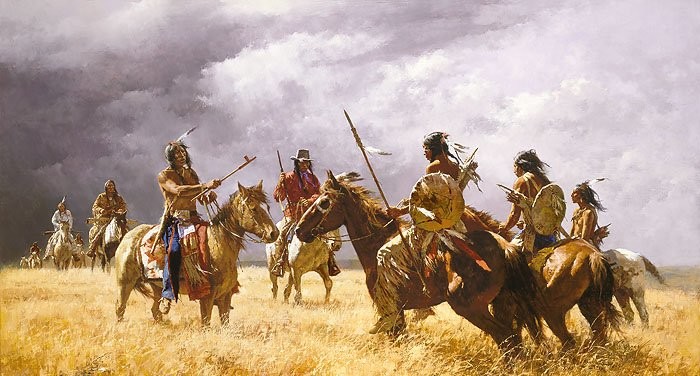
Mountains for Horses: The Comanche Indians and Organizational Rebirth
Surprisingly, Hollywood has done a fairly accurate job of depicting Native American Indians as people set in their ways, passing down tradition and culture from generation to generation. While true for the most part, there were a few revolutionary moments that altered everything for a tribe.
For the Comanche Indians, the Rocky Mountains were considered home prior to the end of the 17th century. Prime real estate today for housing developers, back then this was the worst land anyone could own. Hunting was almost nonexistent, edible vegetation was difficult to grow and the winters were bitterly cold. Too weak to fight against the stronger Blackfoot and Crow Indians, they were forced to hide in these mountains. They would slowly venture south, looking for a better way of life.
But then something happened. In the late 1600’s the Comanches gained access to the horse and their way of life changed. They quickly mastered equestrian practices and moved farther south and west to a warmer climate where buffalo were plentiful, trade with the French was accessible and where their enemies of the north couldn’t be found. Within a few decades the Comanches controlled an area over 250,000 square miles, larger than modern-day Texas. Over the next century and a half, they would effectively stop the Spanish and Mexican advance into New Mexico and Texas, obliterate the Apache people and earn the reputation as the best horsemen in the western hemisphere.
The history of the Comanche changed because they took a high risk, high reward opportunity – going all in on the horse and its offerings. They had the opportunity to change their entire way of life for something unknown and unproven. Their culture, daily practices, organizational structures, even their diet would change. The Comanches calculated the risk and the odds of failure were great. But they were smart enough to know that the risk of not taking the jump was greater.
If we belong to a bottom-tier organization hiding in the shadows of renowned competitors, a substantial change of course must be considered, and if gauged worthy, taken. An unwillingness to change is contentment not to grow. If you are the top player in a market, continuity might be fine. But for anyone else, it can lead to demise.
If the Comanches hadn’t traded mountains for horses, they would be lost in history, one of hundreds of small tribes insignificant enough to get a paragraph in the history books. Instead, they soared to arguably the most influential plains tribe in North America. They altered American history. Many organizations have made similar about-face movements. Nokia started off as a paper mill, rubber works and cable works company. Now they sell mobile phones and games. PayPal was originally a cryptography company who then dabbled in creating software to transfer money between PDAs. At the turn of the century they erased their identity and changed to what they do now. Imagine if these companies hadn’t totally changed direction.
Making a change doesn’t have to be radical. Sometimes it’s revamping a CRM strategy, changing the rulebook on procurement or maybe venturing into a new product line unlike anything you’ve offered before.
The easy thing to do is nothing. When it’s our job, career, reputation or our own money at stake, laying it all on the line is tough. For sure, we’ll have our deterrents as no doubt the Comanche did. But the boldest and most outspoken won over the multitude and took their people from bottom feeding catfish to soaring eagles.
When it’s the company’s life and people’s jobs on the line, we shouldn’t be reckless in our decision making. Numerous organizations have failed because they felt compelled to make a move and made the wrong one. Many more though have gone under because they didn’t move at all. But good opportunities will always come our way. Like the Comanches, we shouldn’t be afraid to take a chance on something that seems like a good idea. Be bold and lead your people to success.
UX Consultant at !Problem Solving International
5yNice post. If you're interested in Native American practices as a possible source of inspiration for modern business, I highly recommend "The Walking People" by Paula Underwood. They did pass along the accumulated wisdom of the past, but they were also very much structured to be a "learning organization" - In my opinion, much more so than most modern companies.
Quality and Planning Manager at Million Air Dallas
6yVery nice Matt! I shared on FB if that's ok.